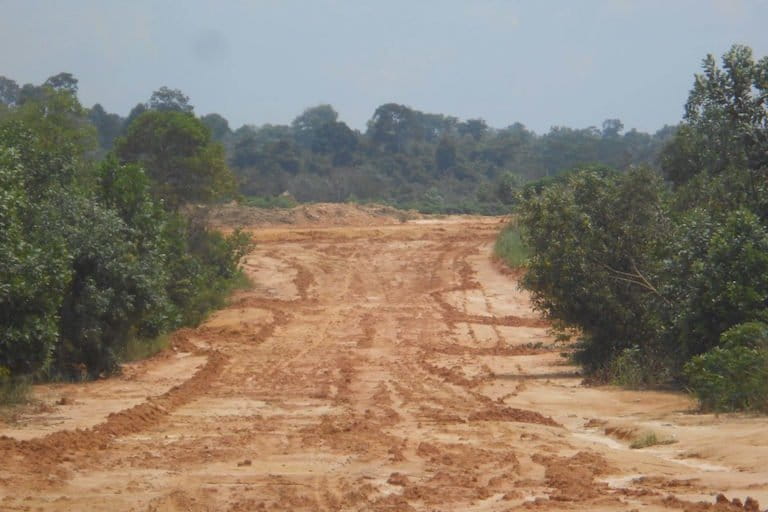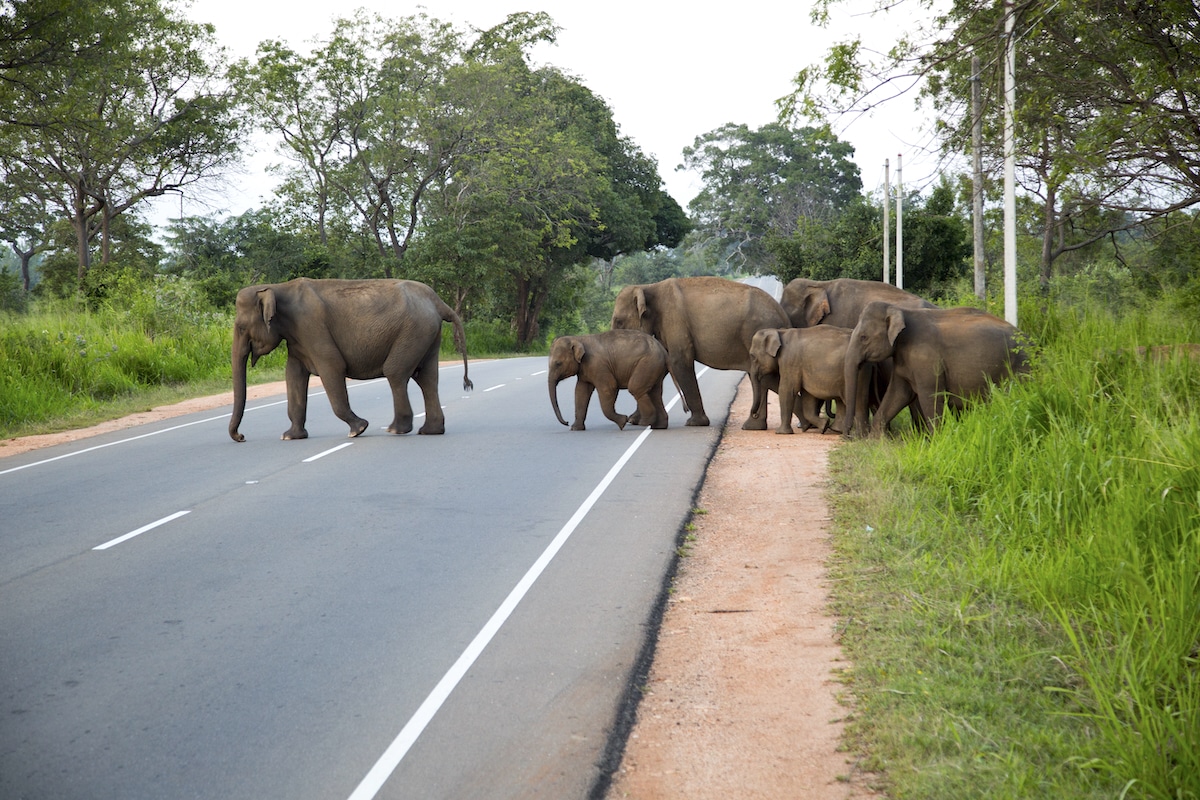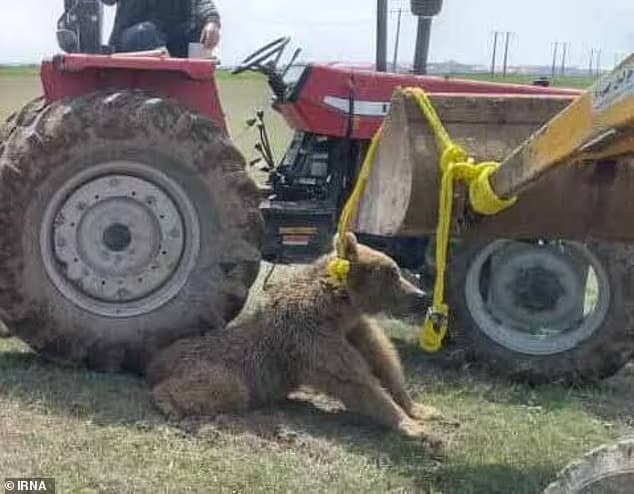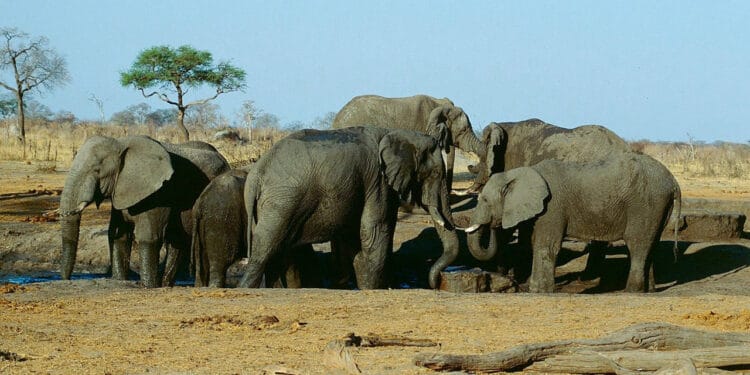Jumar is no stranger to the presence of elephants. Having lived and farmed in the village of Pematang Pudu village in Bengkalis district, in Indonesia’s Riau province, for more than 20 years, he’s seen elephants wandering through his village and fields of sweet potato. And he has never become upset with the animals.
He says he has seen people throw things at the elephants, and even shoot at them when they catch one eating crops — but he doesn’t recommend it.

“People who mistreat them get their houses destroyed,” Jumar says. “It’s like with people, you can’t mistreat them. They get angry and they crush nearby houses.”
Jumar says he has often had to escort the elephants back into the forest over the years, using a flashlight to point the way, but these encounters have grown less frequent in recent years.
“How come we have so few elephants now?” Jumar asks. “Where did they go? I have no idea.”
Bengkalis is home to Balai Raja Wildlife Reserve, best described currently as rapidly shrinking patches of forest surrounded by oil palm plantations and the Rokan oil and natural gas fields managed by Chevron.
The reserve was established in 1986, originally spanning 18,000-hectare (44,500-acre), and in 1992 designated as a conservation area for the critically endangered Sumatran elephant (Elephas maximus sumatranus). However, by 2010, less than 200 hectares (495 acres), or 1.1%, of the intact forest remained. In 2014, the government downsized the reserve to 15,300 hectares (37,900 acres).
There were 25 elephants in the Balai Raja herd in 2014, according to WWF. By late 2019, no more than seven remained. A female named Dita, who struggled to recover from wounds inflicted by a snare trap, died in the reserve in October 2019.
“The condition of Balai Raja conservation area is already severe,” says Yuliantony, director of Tesso Nilo National Park, about 230 kilometers (140 miles) south of Balai Raja. He says the loss of habitat isn’t just a result of encroachment by plantations and smallholder farms, but government development as well.
“Not only the people, but also the state is responsible,” Yuliantony says. “There is a subdistrict office, a school building, and a scout station as well.” He says one long-term solution would be to relocate the elephants to a fenced sanctuary, but adds that this will forever destroy the character of the landscape.
“If we move them from Balai Raja,” he says, “the uniqueness of the territory will be lost.”

Roads cause fragmentation
In addition to plantations and building development, a new road that will eventually connect the major cities of Pekanbaru to the south and Dumai to the north has bisected much of the remaining elephant habitat surrounding the reserve. This construction has both destroyed some of the remaining intact forest as well as fragmented the degraded habit commonly traversed by the herd. Environmental groups have been fighting against this and several other road projects for the last five years, with little success.
Zulhusni Syukri, director of the Sumatra-based Rimba Satwa Foundation, has long been working to prevent the road from destroying elephant habitat. He says he once confronted the head of the Bengkalis public works department and asked the official whether the government felt any responsibility for the elephants that were coming under increasing pressure because of the road construction.
“He was unable to provide a solution at the time,” says Husni, as he’s known. “He just promised to invite us to discuss the matter formally later … until he was jailed, that is.”
The official, Muhammad Nasir, was sentenced to seven years in prison in August 2019 on corruption charges. He was found guilty of corruption related to the awarding of contracts for several road projects.
Husni also tried to approach the Bengkalis district chief, Amril Mukminin, but was repeatedly unsuccessful in securing a meeting. Amril was himself later sentenced to six years in prison for accepting 5.2 billion rupiah ($368,000) in bribes related to the road construction scandal.

Attempts by Husni to convince officials in the Riau provincial conservation department, or BBKSDA, have also failed to gain traction. Officials there point out the road is outside the established boundaries of the Balai Raja reserve, therefore they have no place to comment. Husni says he does not accept this excuse.
“Elephants are also found outside the wildlife reserve and the Riau BBKSDA knows this very well,” he tells Mongabay.
Amid the ongoing multitude of corruption scandals and protests by environmentalists, construction of the West Duri Ring Road has been temporarily halted since last year. However, part of the route is already open, and has clearly disturbed the elephants’ habitat. Wetlands where the animals once bathed have been filled in, and several small enclaves of forest where they were known to shelter have been cleared.
With their habitat continuing to shrink, the elephants are increasingly coming into contact with humans. Areas where they would be seen about three times a year are now being visited twice as frequently.
In August of this year, BBKSDA officials working with the police, Rimba Satwa Foundation and others escorted 14 elephants out of a village and into a forested area that has been cut off by the road and other construction. To help mitigate the disruption to their migration patterns, elephant tunnels and a bridge have been included in the road construction to ensure the animals have access to adequate water sources and ample feed.
However, Husni says he is not convinced these bypasses will work, as attempts to lure the elephants across them with feed have so far failed. While some of the animals have approached the bridge, none have crossed — although several have crashed into the steel structure, cables and retaining wall.

The landscape around Jumar’s village has gotten more built up. New houses, wider roads and spreading plantations have continued to replace the forest he once knew. Jumar says he sometimes misses seeing the elephants.
“Where did they go?” he asks, looking at the tofu factory across the road where he has frequently seen them in the past. “Why don’t they come?”
This article by Mongabay Indonesia and Tempo was first published on Mongabay.com on 14 December 2020. Lead Image: Sumatran elephants, by Rhett A. Butler/Mongabay.
What you can do
Support ‘Fighting for Wildlife’ by donating as little as $1 – It only takes a minute. Thank you.







Leave a Reply